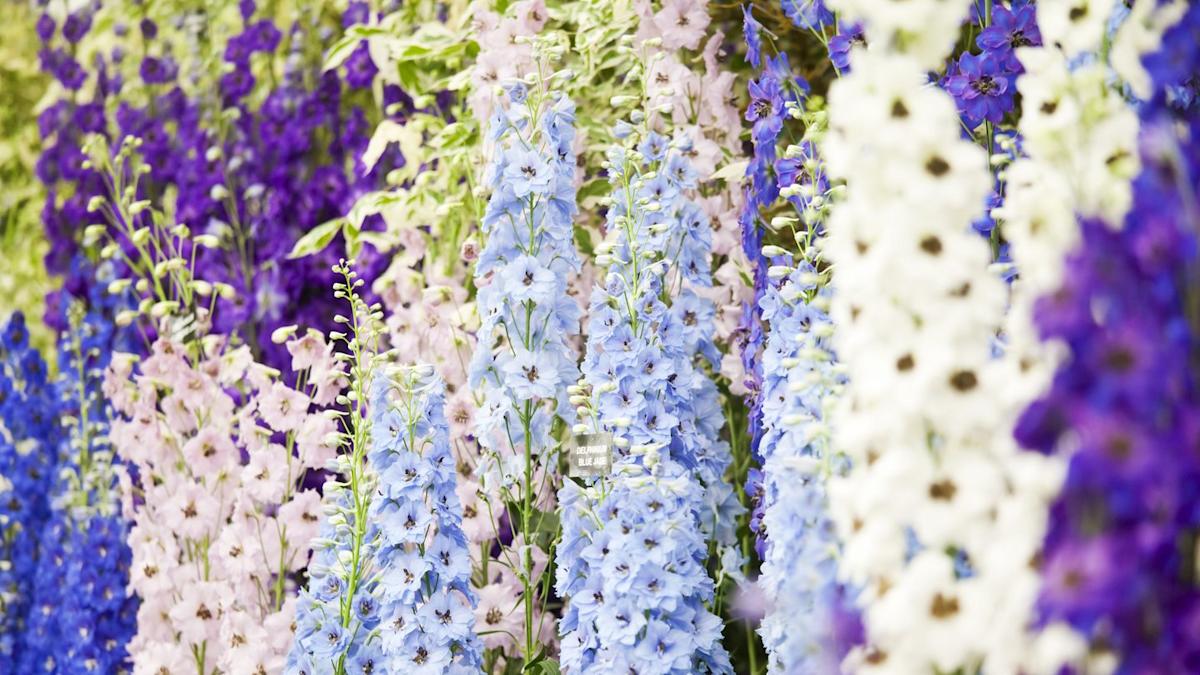“Hearst Magazines and Yahoo may earn commission or revenue on some items through these links.”
It’s no secret that His Majesty King Charles III is an avid and knowledgeable gardener. He is the creative force behind the design and management of his world-famous gardens and Highgrove House, and his annual visit to the RHS Chelsea Flower Show is a highly-anticipated moment. This year, David Austin roses even debuted a new bloom named for him: The King’s Rose, a striped, heritage breed inspired by Medieval roses. But when it comes to flowers, King Charles does have a favorite: delphiniums.
He is the royal patron of The Delphinium Society, and he grows the vibrant summer blooms in nearly every home he owns, from his Highgrove in Gloucestershire to his properties in Scotland, including Castle of Mey, Dumfries House, and Balmoral. Furthermore, before his mother, Queen Elizabeth II, died, King Charles was known to engage in a little friendly competition with her over who could grow the tallest delphiniums, which are a genus of the buttercup (Ranunculaceae) family.
The perennial even appears in a new textile, “Delphinium and Lilac,” a reinterpretation of a classic Sanderson chintz, in the Highgrove by Sanderson fabric and wallpaper collection inspired by King Charles’ gardens and developed in collaboration with The King’s Foundation. “For me, the magnificent, gloriously appareled delphinium, with its impeccable bearing and massed in platoons, holds pride of place in my botanical affections,” King Charles shared on Twitter, now X, in 2023.
Despite the electric summer show delphiniums deliver when cared for properly, they have a reputation for being a bit finicky. “I am not so into delphiniums yet,” Martha Stewart said in an exclusive interview with VERANDA upon publishing her latest book, Martha Stewart’s Gardening Handbook. “They are very tricky to grow properly, and you really have to devote time and energy to them.”
So, we asked Melissa Simpson, head of horticulture for The King’s Foundation, to share how she and the king have perfected their process for growing beautiful delphiniums summer after summer. As is the case with most plants in the garden, the key to healthy delphiniums is getting the conditions right in the first place, says Simpson. Here, her top tips for growing and caring for delphiniums.
Where Can Delphiniums Grow?
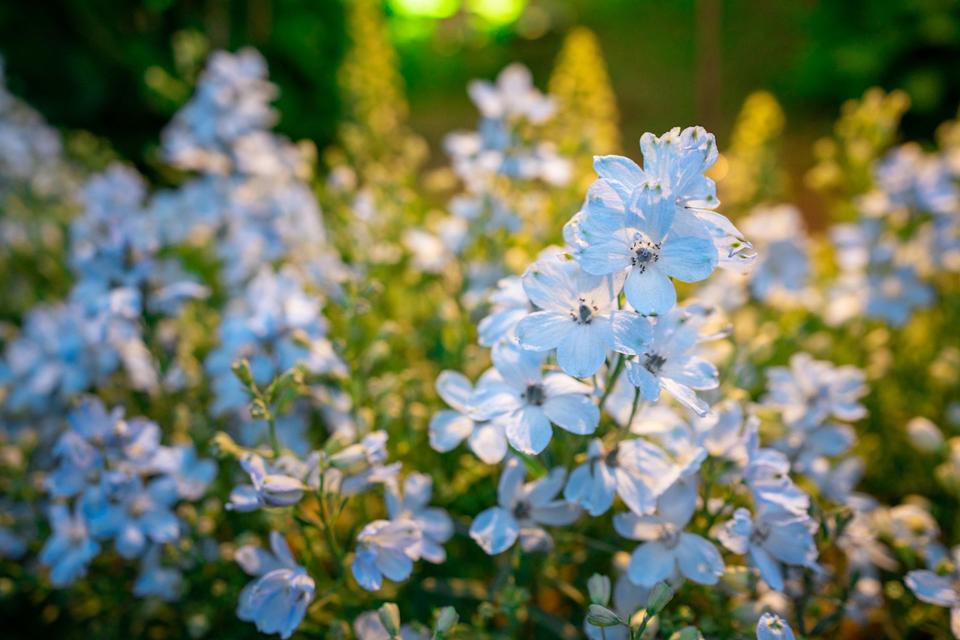
TravelCouples – Getty Images
In the US, delphiniums are considered hardy perennials in USDA zones 3-7, which means they can return year after year. “They do like the Scottish climate because it’s a bit cooler,” says Simpson, who in her role at The King’s Foundation oversees the gardens at Highgrove along with the gardens at Dumfries House and the Castle of Mey.
As for sunlight, Simpson recommends partial shade. “They do best in dappled shade rather than full sun,” she says, noting that various trees, shrubs, and hedges in the Highgrove kitchen, cottage, and sundial gardens, where delphiniums populate beds and borders, lend the requisite shade.
The other requirement for choosing where to grow delphiniums is assessing soil quality. “They like soil that’s a bit more alkaline” in terms of PH, and that drains well, although they can tolerate soil with more clay, says Simpson.
How to Care for Delphiniums
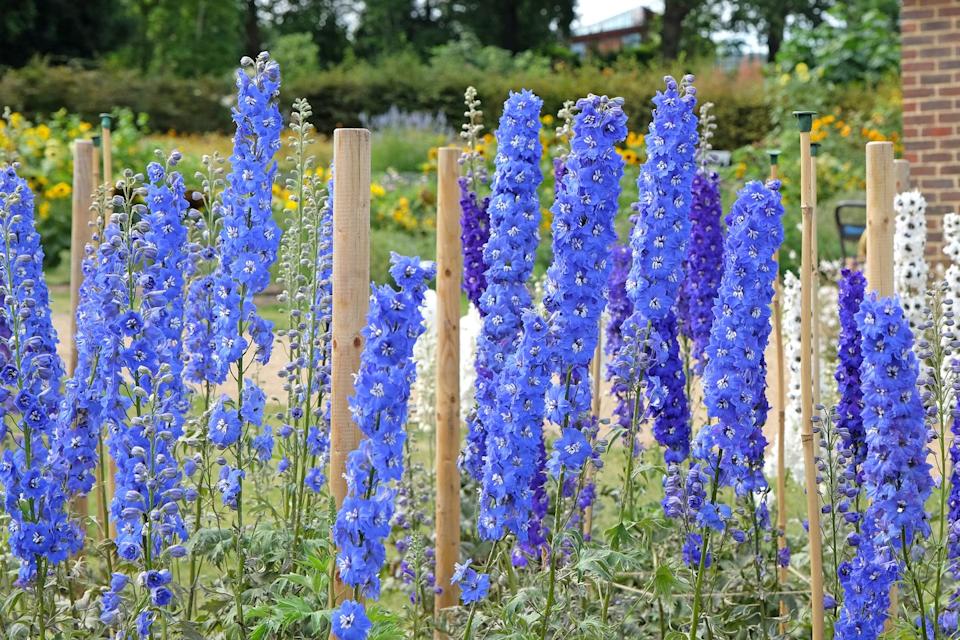
Alex Manders – Getty Images
The key to caring for delphiniums, according to Simpson, is ensuring they are properly staked and that they get enough food.
The horticulture team at the King’s Foundation has developed a couple of creative ways to stake the flowers when they grow to about one foot tall. At Highgrove in the sundial and cottage gardens where the delphiniums are planted in large clusters or groupings, the team paints bamboo stakes dark green so that they blend in with the garden, and then each plant is individually wrapped with similarly camouflaged string. “We have an in-house competition among the gardeners on who gets the most compliments from the boss,” says Simpson.
At Dumfries House, where the delphiniums are planted in one 50-meter-long border, the team takes a different approach. They support the perennials’ growth with fisherman netting, similar to the method applied in the kitchen garden at Highgrove, where the delphiniums are also planted in a long border. “We’ve tried string but it gets a bit flopsy and doesn’t last more than a year, while the more robust netting lasts 10-15 years,” says Simpson. “We’re always looking for more environmentally friendly materials.”
All-Natural Coco Coir Trellis Netting
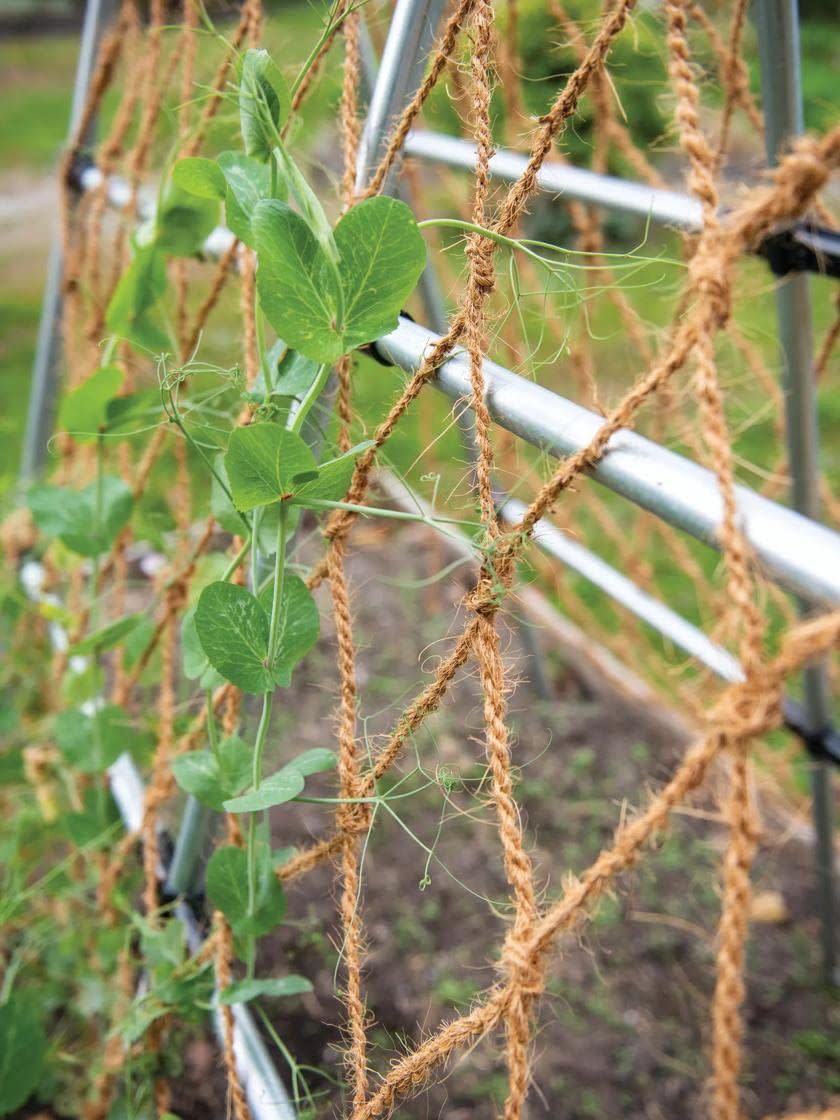
When it comes to feeding them, King Charles is adamant about using compost, never fertilizer. “Good compost is not just food for the plants but improves the soil conditions as well,” says Simpson. “This is very important to His Majesty, who has really done so much research on how soil works.”
The team at Dumfries House uses a spent mushroom compost, which they layer on 1-2 inches thick. “This compost is weed free because it’s sterile, so there’s no competition for the delphiniums. Plus it keeps the moisture in and feeds the plants,” says Simpson.
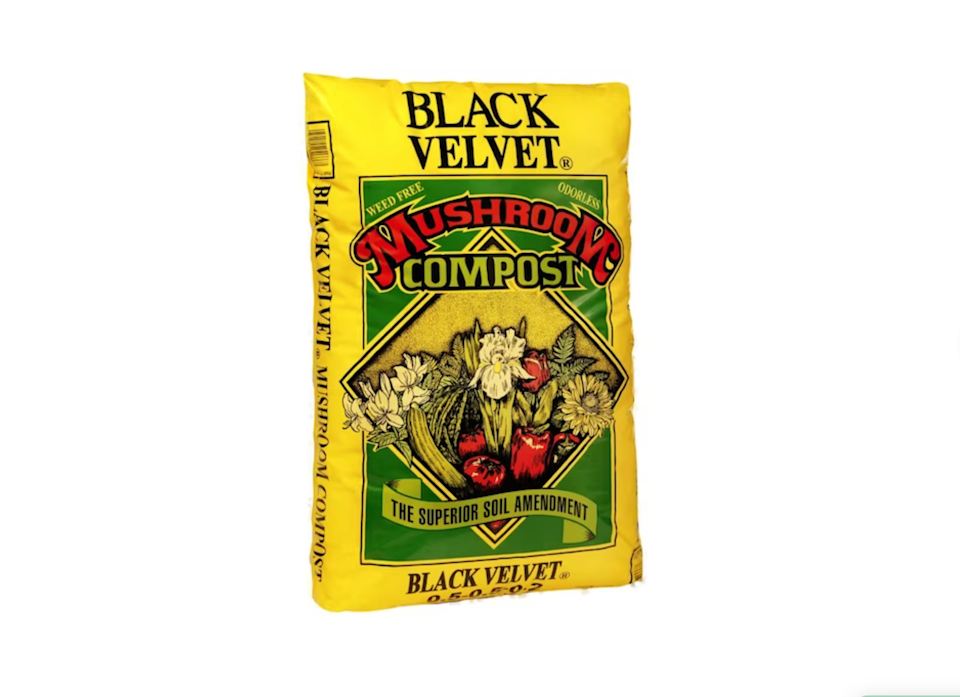
When properly cared for, delphiniums will flower for a longer period of time. “We get them to flower for a good month, from June through to July and sometimes longer,” Simpson says. After their blooming period, the King’s Foundation team deadheads the plants by cutting them to just below the flower portion of the stem and then letting them die down. “They are so tall we like to plant them at the back of borders, like at Dumfries House, and then when we cut them down their scraggly parts are hidden by plants that will flower for a bit longer,” Simpson says.
Over the winter, Simpson notes the team will lift and divide delphiniums that have grown too large. “They do need a lot of space.”
Common Problems with Delphiniums
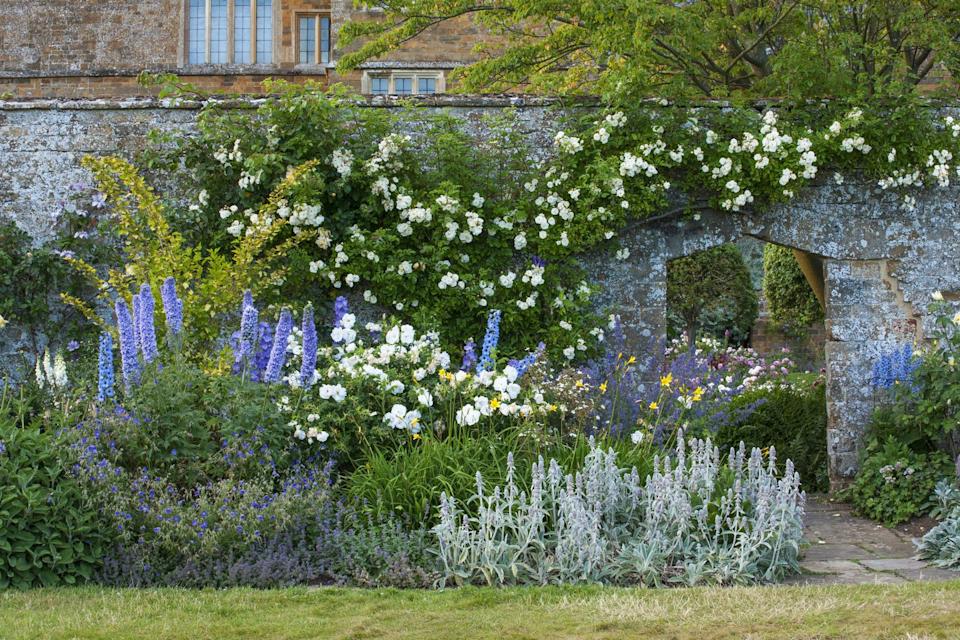
Clive Nichols – Getty Images
Delphiniums “can be greedy,” says Simpson, “but with the right location, lots of love, and lots of good compost,” they make a wonderful addition to summer gardens. “Everyone should have delphiniums in their garden. They’re not a difficult flower to grow, it’s just really important to get the conditions and your soil right,” she says. “If you get your soil right, you can grow pretty much anything.”
Another potential problem to watch for is slugs. “Delphiniums can be obliterated by slugs,” says Simpson. At Highgrove House, where the soil is more free draining, the horticulture team “puts a little bit of grit around the crown in spring,” says Simpon. “It deters the slugs because it’s sharp.” At Dumfries House, where the soil has more wet clay in it, “there are loads of frogs and toads,” which keep pests like slugs and snails at bay.
Finally, because they grow so tall, delphiniums are at risk of flopping over, especially in windy conditions. “This is why it’s critical that any delphinium gets a stake,” says Simpson, who also recommends buying varieties with strong stems for windier gardens.
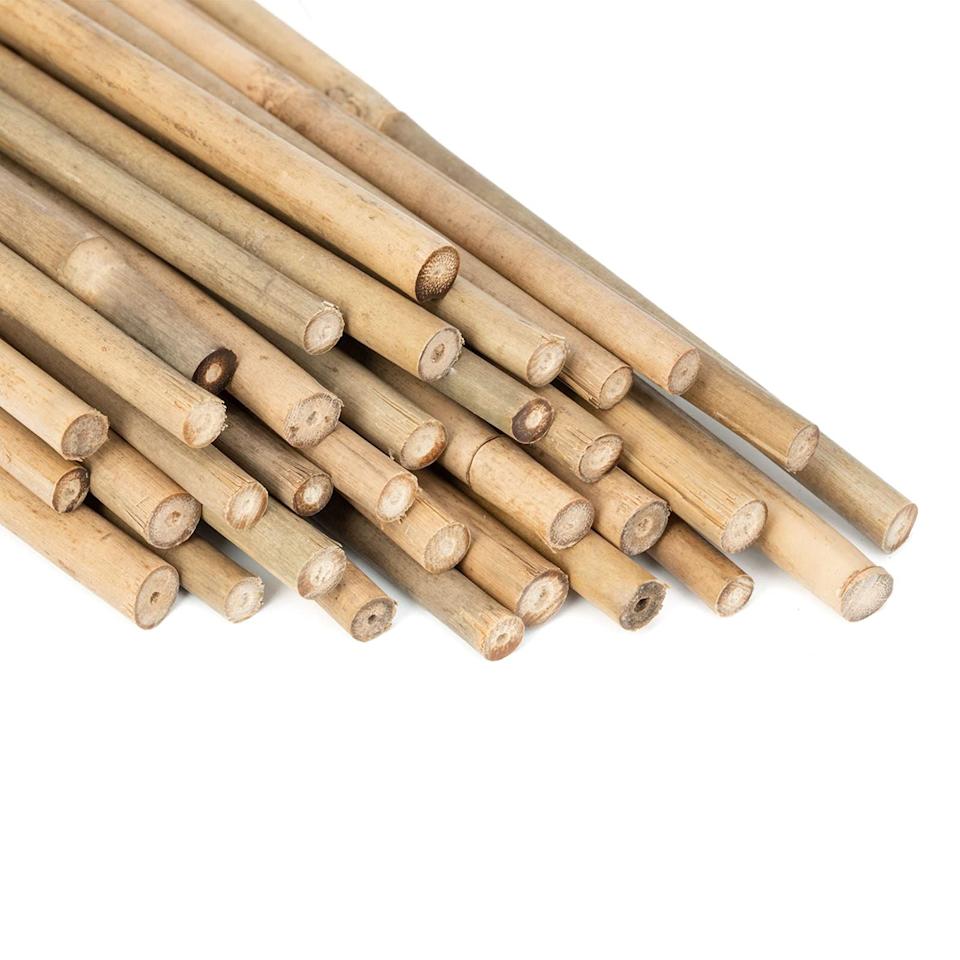
Types of Delphiums
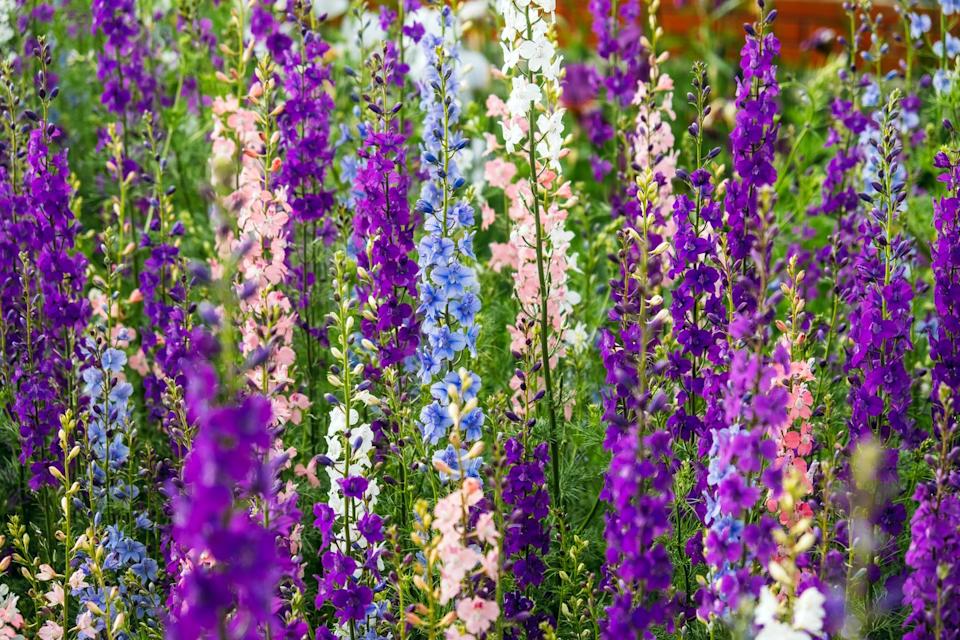
Iryna Imago – Getty Images
There are over 300 varieties of delphiniums, according to Simpson, who recommends consulting The Delphinium Society (based in the UK) for more information. King Charles is notoriously particular about the shades of blues, purples, and pinks that he grows. According to Highgrove: A Garden Celebrated (Little Brown, 2014), his favorite varieties are: ‘Clifford Lass’, ‘Amadeaus’, ‘Loch Leven’, ‘Cassius’, ‘Cymbeline’, and ‘Faust’—all Elatum types that are generally easier to grow than Pacific Hybrid varieties, which are shorter lived.
A third type of delphinium is the Belladonna Group, a hybrid variety native to North America. They tend to grow 3-4 feet high, while the Elatum group will reach 6 feet tall or higher, and they produce loose, branching flower spikes that differ from the taller, tighter spikes for which Elatum types are known.
Where to Buy Delphiniums Multi-Color Flowering Delphinium Mixture
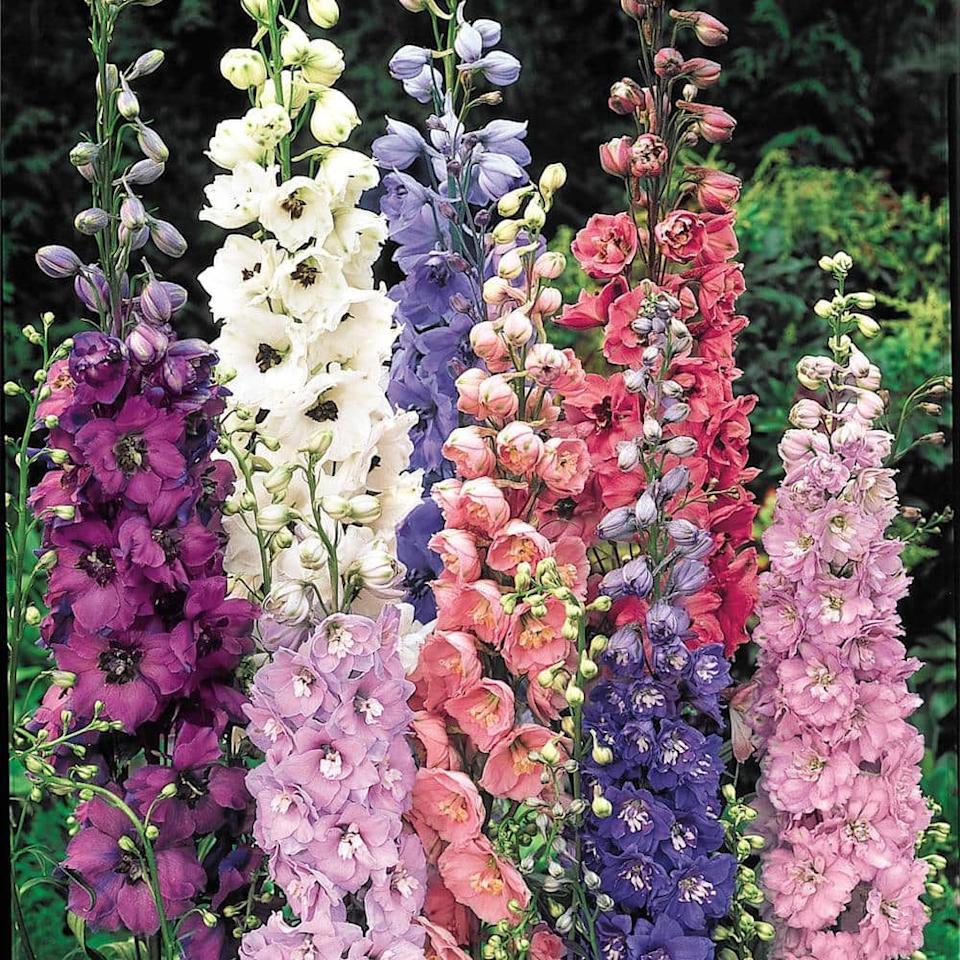
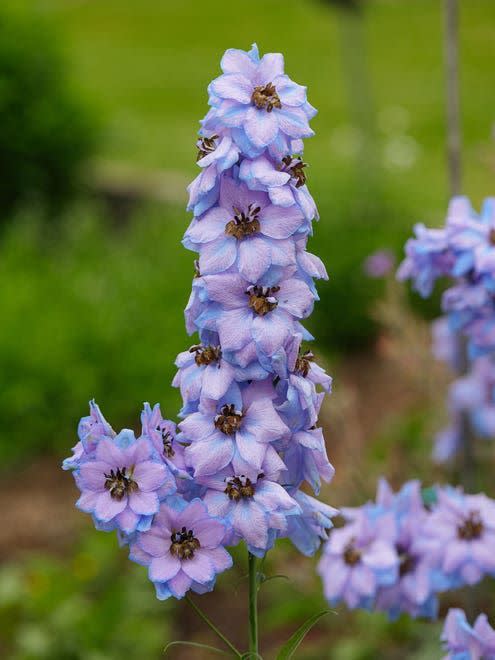

Metrolina Greenhouses Delphinium
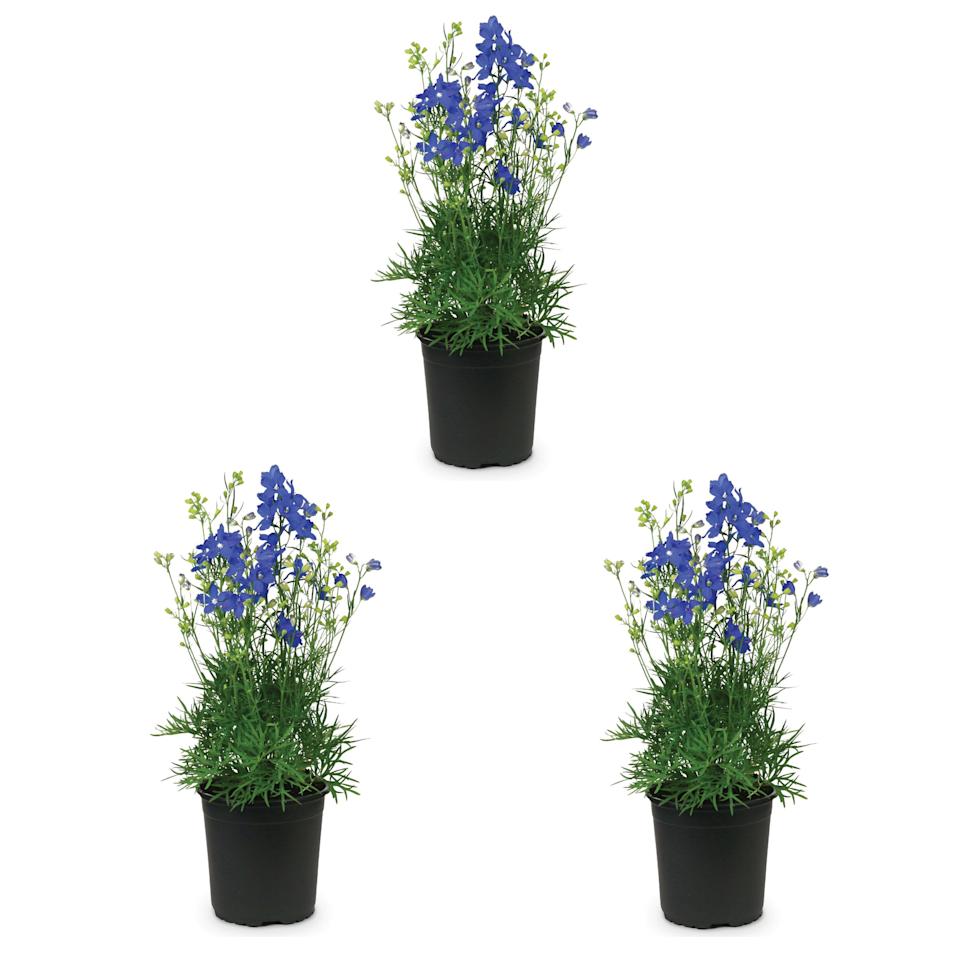


You Might Also Like
